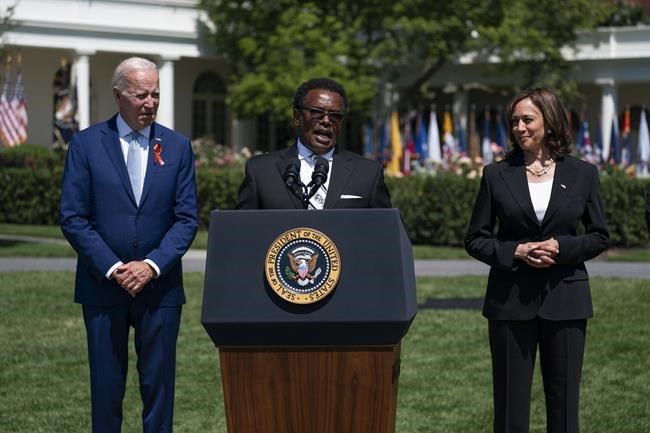WASHINGTON — In a nation of more than 332 million people now outflanked by their own firepower, a Canadian-born professor is preaching the merits of using risk management to prevent mass shootings.
Sheldon Jacobson, who teaches computer science at the University of Illinois Urbana-Champaign, suggests approaching gun safety like air travel: with screening efforts focused on identifying those who pose the greatest danger.
"People think we can bring all these killings down to zero. It's not going to happen," said Jacobson, who was born in Montreal and moved to the U.S. in 1983 to go to school.
"What we can do is reduce the risk. And as we reduce the risk, we will reduce the outcome, which is fewer gun violence incidents and ultimately fewer deaths."
Jacobson's own research was integral in developing the PreCheck system the U.S. Transportation Security Administration uses to streamline the often time-consuming safety screening procedures in place at airports across the country.
For a small fee, frequent flyers who submit to an interview and background check can skip some of the most frustrating airport security rituals, like doffing shoes and belts, removing laptops and waiting in long lines.
The same methodology is used for Nexus, the Canada-U.S. preclearance system that provides eligible travellers a fast-track option for moving between the two countries.
"Bring the stakeholders to the table to start discussing the opportunities to create the appropriate layers (of security)," Jacobson said.
"This kind of thinking should not be the end of discussion, it should be the beginning of the discussion, to bring the people together to talk about the possibility."
The idea, however, would likely face headwinds from the conservative Supreme Court, which just last month struck down a 109-year-old New York law that had limited the ability to carry a gun in public for self-defence.
The Bruen decision, as it's known, kneecaps "concealed carry" laws, which advocates credit for giving New York, California, Hawaii, Maryland, Massachusetts and New Jersey the lowest rates of gun violence in the country.
"A risk-based approach, which is a group-based approach, (runs) head on into the Bruen decision," said Alexandra Filindra, a politics professor at the University of Illinois Chicago who specializes in gun safety laws.
The court essentially found that the New York law was an affront to the Second Amendment of the U.S. Constitution, which of course is where the "right of the people to keep and bear arms" is enshrined.
"When you're constricted, you have something that's called a fundamental right, and courts can only use history to justify upholding a law," she said of Bruen. "What risk-based approach would actually withstand scrutiny under this system now?"
Other experts fear that a data-based approach to screening would-be gun owners would end up unfairly targeting communities and demographics with higher rates of crime and recidivism.
"I suspect that a lot of those algorithms will suffer from the same problems that algorithms on other things do — for example, sentencing algorithms have a tendency to be very racist," said UIC politics professor E.J. Fagan.
"Whether or not those problems, either racial or otherwise, are worth the trade-offs — that's a question for policymakers."
Jacobson acknowledged the risk of "profiling," but said he believes the system could be calibrated to minimize such dangers.
"If we do this correctly and reasonably, with the appropriate stakeholders in place, we're not focusing so much on who you are, but on what your purpose and goals are of owning a firearm," he said.
"It's easy to connect dots … but that doesn't mean there is a causal relationship there, a cause and effect. Until you get into the discussions, there's no way to know what the layers are going to be."
Just six weeks after 19 children and two teachers were killed in an elementary school classroom in Uvalde, Tex., seven people died and nearly 40 were injured when a rooftop gunman opened fire on a Fourth of July parade in Highland Park, a suburb north of Chicago.
And two weeks prior to Uvalde, 10 people were killed when a gunman motivated by racial hatred stormed a grocery store in Buffalo, N.Y. All three cases involved high-powered, semi-automatic assault weapons in the vein of the AR-15 rifle.
The tensions in the U.S. around mass shootings, gun rights and the Supreme Court were on full display Monday at the White House, where President Joe Biden marked what some call the most substantial bipartisan gun-control legislation in a generation.
"You have to do more," shouted Manuel Oliver, whose 17-year-old son Joaquin was one of 17 people gunned down in 2018 at Marjory Stoneman Douglas High School in Parkland, Fla.
Oliver, now a prominent gun-control advocate, said on Twitter that he took issue with the tone of Monday's event: "The word CELEBRATION has no space in a society that saw 19 kids massacred just a month ago."
The Bipartisan Safer Communities Act, a rare instance of Democrats and Republicans reaching a consensus on Capitol Hill, provides funding to encourage states to enact more stringent "red flag" laws designed to keep dangerous weapons out of the wrong hands.
It also expands mental-health supports in schools and closes the so-called "boyfriend loophole," which excluded intimate partners living in a different domicile from restrictions designed to deny weapons to anyone convicted of domestic violence.
Even the bill's advocates have acknowledged it doesn't go far enough — particularly those calling for higher age limits for gun purchases and restoring the now-expired assault weapons ban from the Bill Clinton era.
Biden "has good intent, but we also know he has not followed through," said Sandy Phillips, whose daughter Jessi was among 12 who died in the movie theatre massacre in Aurora, Colo., in 2012.
"We're not going to stay quiet and say, 'Well done, Mr. Biden, Mr. President,' when there's so much more to do."
This report by The Canadian Press was first published July 12, 2022.
James McCarten, The Canadian Press




